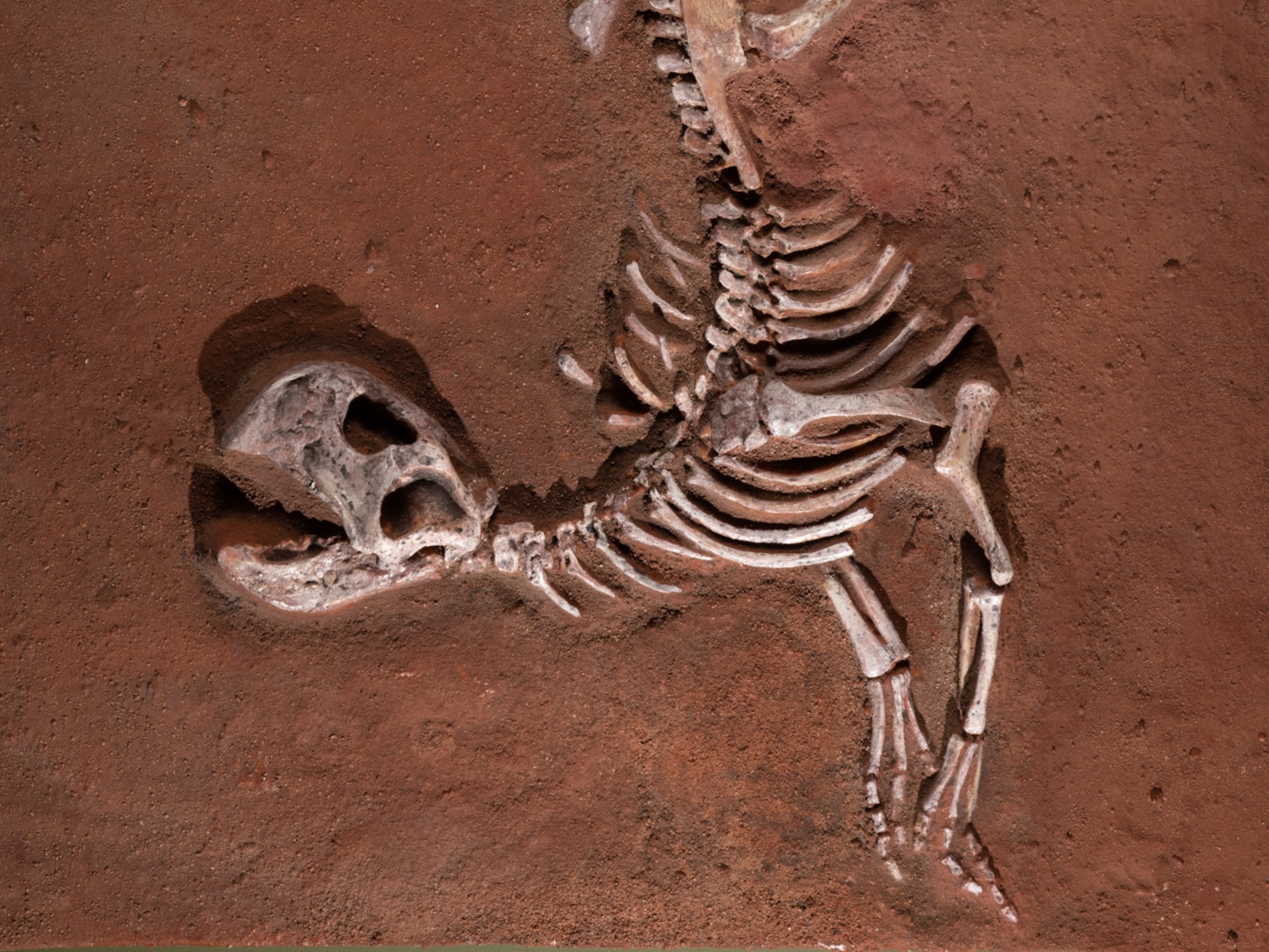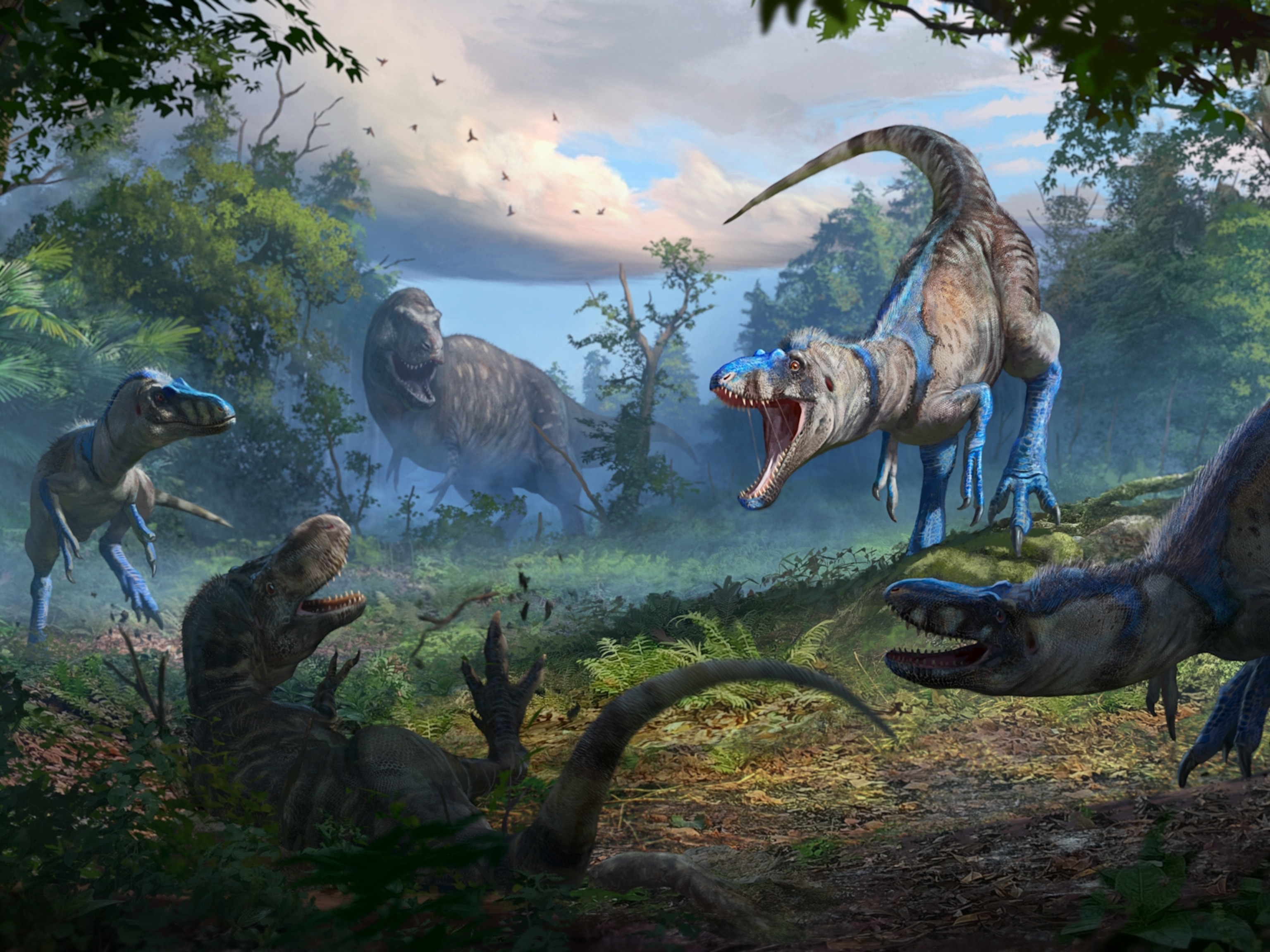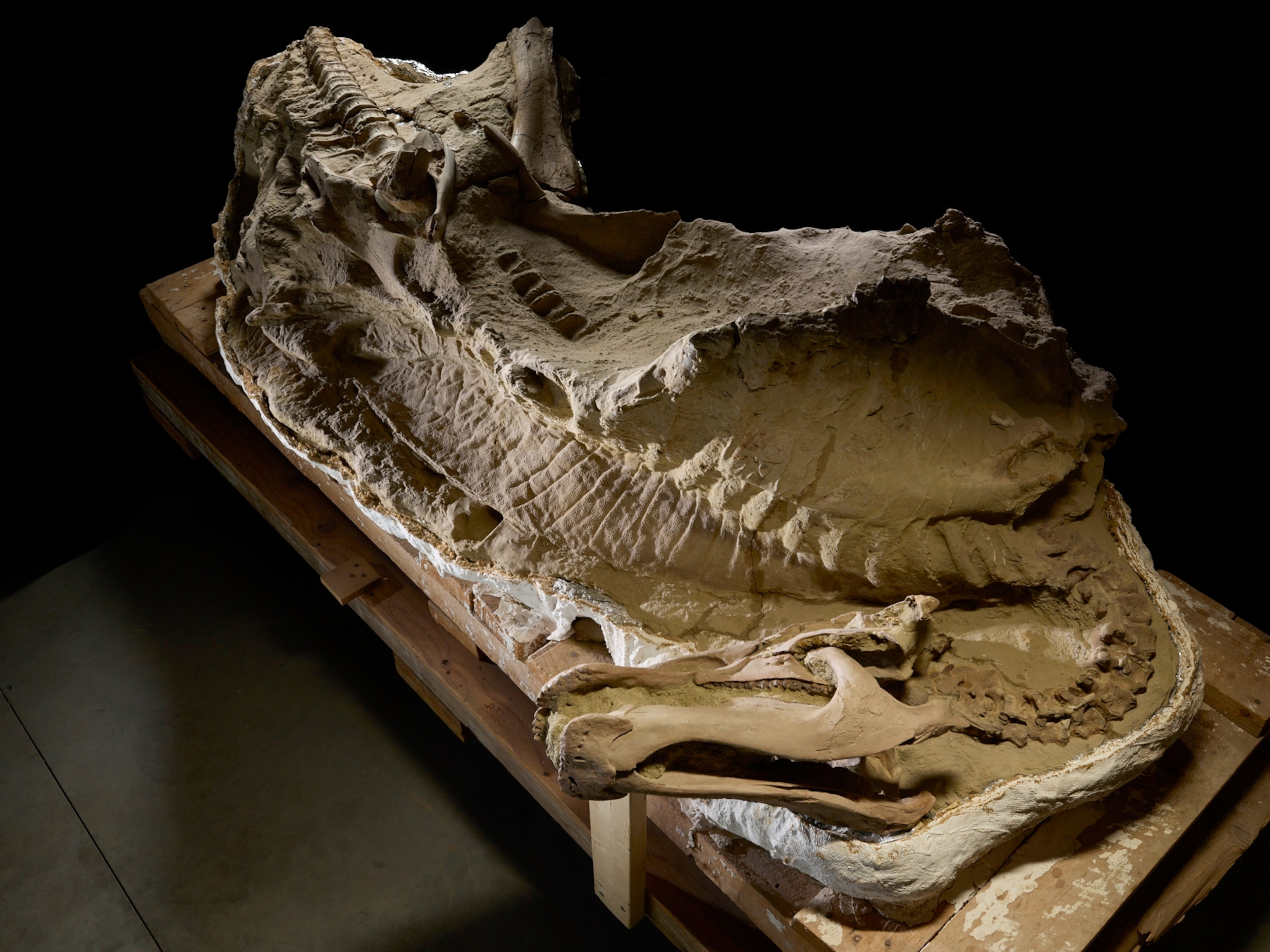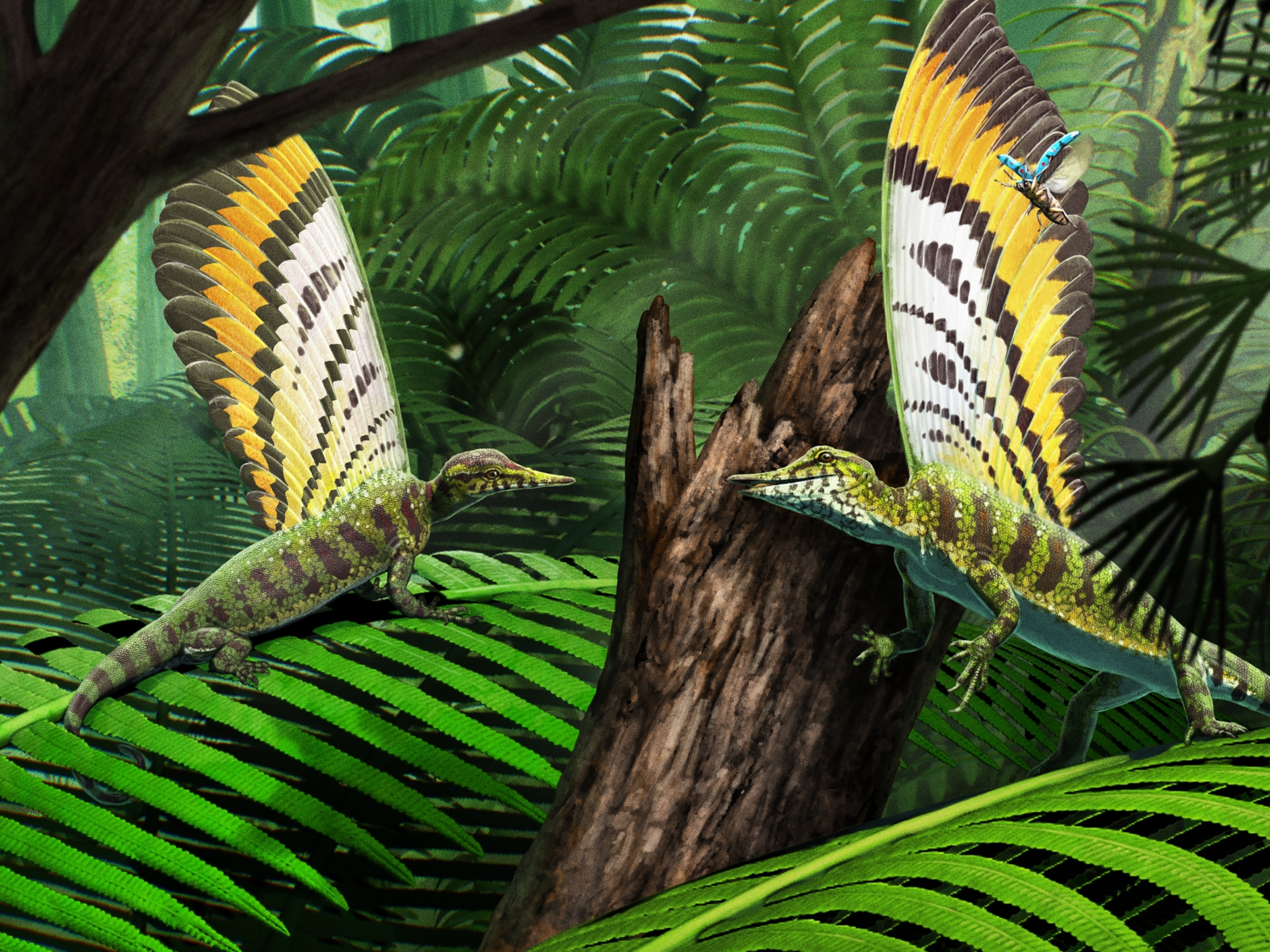
"Sea Monster" Fetus Found—Proof Plesiosaurs Had Live Young?
Prehistoric reptiles gave birth to live young, fossil suggests.
Like whales, humans, and most other mammals, plesiosaurs—giant, long-necked marine reptiles of dinosaur times—gave birth to live young, a new fossil study suggests.
Even as it apparently solves one mystery, though, the finding raises another: Did the "sea monsters" swim in mother-child pairs or even in larger groups, like modern whales and dolphins?
(See "Giant 'Sea Monster' Fossil Discovered in Arctic.")
The study focused on a 78-million-year-old, 15.4-foot-long (4.7-meter-long) adult Polycotylus latippinus plesiosaur fossil found in 1987. The fossil's abdominal cavity contains tiny bones—parts of a plesiosaur that hadn't been born by the time its mother died.
(See a prehistoric time line.)
The finding, detailed in this week's issue of the journal Science, is the first proof that plesiosaurs were viviparous—that they gave birth to live young.
"The fetus is too large to make an egg physiologically or mechanically feasible," study co-author Robin O'Keefe told National Geographic News. "And why carry a big egg around?"
The discovery, while not completely unexpected, may fill a frustrating gap in plesiosaur knowledge, he said.
"Scientists have long known that the bodies of plesiosaurs were not well suited to climbing onto land and laying eggs in a nest [like dinosaurs]. So the lack of evidence of live birth in plesiosaurs has been puzzling," O'Keefe, a plesiosaur expert at West Virginia's Marshall University, said in a statement.
(See prehistoric sea-monster pictures.)
Mothering Monsters?
Live birth has been documented in other groups of ancient marine reptiles—such as the dolphin-like ichthyosaurs (picture)—but the study suggests plesiosaurs were unique, in that they generally gave birth to a single, large offspring, according to the study.
"Ichthyosaurs gave birth to multiple [small] progeny. That's what makes plesiosaurs stand out from other ancient marine reptiles," said study co-author Luis Chiappe, director of the Dinosaur Institute at the Natural History Museum of Los Angeles.
It's "certainly possible" that plesiosurs sometimes gave birth to twins or triplets, co-author O'Keefe said. "In fact, I would almost expect it."
Chiappe and O'Keefe estimate the unborn baby plesiosaur was nearly 5 feet (1.5 meters) long, or about a third the length of the mother.
Many of the animals living today that give birth to single, large babies are social and invest a lot of time and energy into raising their young. Plesiosaurs may have exhibited similar behavior, Chiappe said, making their parenting styles more like that of modern whales and dolphins than of most reptiles.
"The mother is essentially taking a risk, because if you want to have your genes propagated, you're putting a lot of energy into that single baby, so it's conceivable that the mother's investment of energy extended to after the baby was born," said Chiappe, who, like O'Keefe, has received funding for past projects from the Committee for Research and Exploration of the National Geographic Society (which owns National Geographic News).
(See picture: "New 'Sea Monster' Species Identified.")
Pick a Pack or Pod of Plesiosaurs?
Chiappe admits the active-parenting hypothesis could be difficult to test. But if baby plesiosaur fossils are repeatedly found alongside adults, it would support the idea of maternal care among the creatures, he said.
In such a case, maternal care "would be a more reasonable interpretation than saying" large and small plesiosaurs "died apart and somehow kept being buried together every time," Chiappe said.
The new discovery also raises the interesting question of what to call a group of plesiosaurs: a school? a pack? a pod?
"I haven't thought about that," Chiappe said. "I guess, colloquially, you could call them a pod"—a term generally reserved for marine mammals. "But from a scientific point of view, we would probably still use the term 'group.'"





